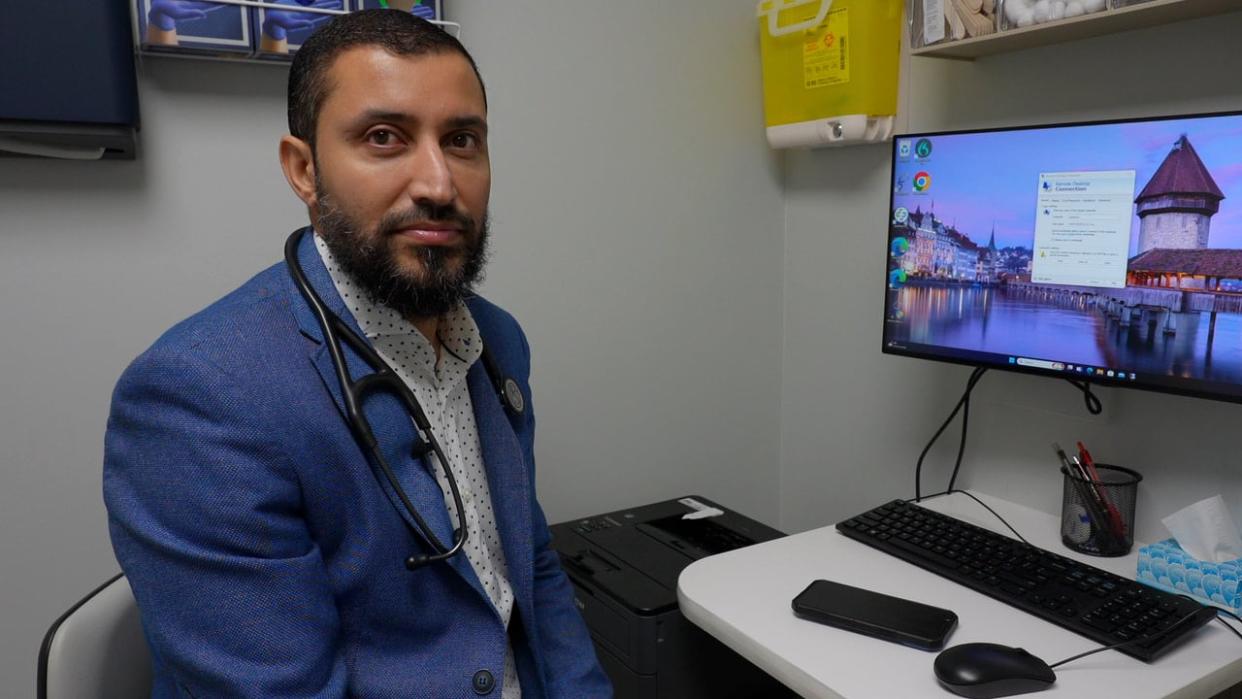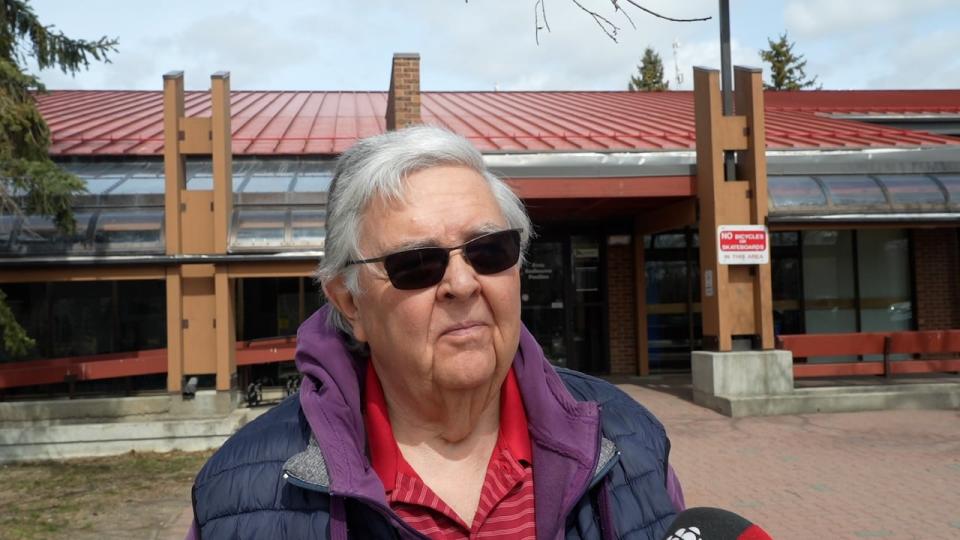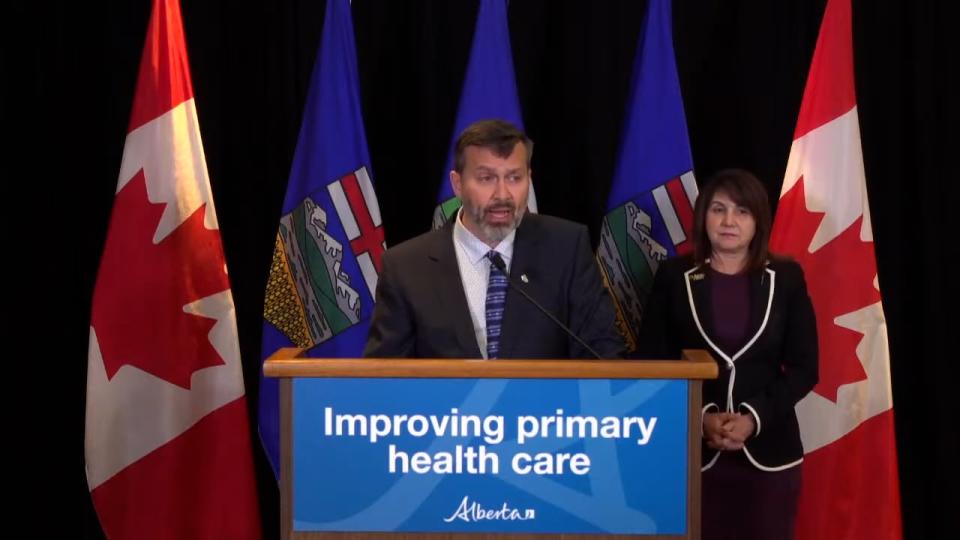Can't find a family doctor in northern Alberta? You're not alone

When Jae Storle wakes up in the morning, he checks to see if any doctors in Grande Prairie are accepting new patients. Despite his best efforts, he hasn't had a family doctor for the last three years.
It's an issue he said he never faced when living in B.C. or Saskatchewan.
"I just really have nobody that knows me as a doctor and can treat me," said Storle, 73.
Storle has neuropathy in his feet and doesn't have someone to assess him when he gets an infection or has a problem with his toes.
He either has to go to emergency, where he's waited up to 13 hours for care, or visit a walk-in clinic. He said he visits a clinic about once a month.
"A lot of people are suffering," Storle said. On a recent morning, he lined up for a clinic two hours before it opened to ensure he could be seen that day.
"That's not fair that people should have to stand like that."
Storle wants to see more incentives for doctors, like grants for physicians to set up offices in rural areas, or incentives for more young people to go to medical school.

Jae Storle has been in Grande Prairie for years, but he has struggled to find a family doctor for regular medical care. (Dennis Kovtun/CBC)
Alberta is facing a shortage of family physicians, and in the north of the province there are many areas with no doctors accepting new patients.
Alberta Health provided CBC with a list of the number of doctors available in each northern community.
CBC then compared that with the Primary Care Network's list of doctors accepting patients in the north, and called the clinics accepting new patients to confirm the numbers.
In Grande Prairie there are 49 family physicians, and none of them are taking new patients. Bonnyville and Cold Lake both have 20 or more family physicians, but none are accepting patients. And in Fort McMurray there is only one doctor's office accepting new patients.
Many doctors who are accepting patients are booking months or a year out.
Doctor recruitment and retention has been a big pain point for Dr. Nasim Arruj, owner of Hardin Medical Clinic. He's had a practice in Fort McMurray for 10 years, and for the entire time he's been trying to recruit another permanent doctor. So far he's had no luck.
And the demand for his services is high.
"Our phone is like 911," Arruj said. "Never stop."
Arruj relies on bringing in temporary doctors from across the country, but it's costly as he covers accommodations, flight reimbursement and vehicles.
"That's extra work and extra expenses," he said.
When CBC interviewed Arruj, his clinic had five locum doctors from across the country.
About 200 patients go through the clinic every day, but Arruj said it's "not profitable."
He barely has time to see his own patients, so they see the locum doctors instead.
"I'm exhausted," Arruj said. "I'm at the stage of, like, burned out."
He has four years remaining on his lease, and he's hesitant to renew without the promise of another doctor helping him.

Dr. Paul Parks, AMA president, and Adriana LaGrange, Alberta's minister of health, announce an upcoming new funding model for family physicians. (Government of Alberta)
In an interview, Health Minister Adriana LaGrange said rural Alberta is currently short about 110 family doctors, and acknowledged that the shortage has had an impact on practising doctors.
"It became apparent that some of our family physicians were indeed struggling," LaGrange said.
The province is tackling the issues on several different fronts, she said.
LaGrange noted that last October, the Alberta government pledged to spend $57 million over three years to provide family doctors and nurse practitioners with support to help manage increasing numbers of patients.
In December, the province committed to spending a further $200 million over two years to help family doctors while a new funding model for physicians is developed with the Alberta Medical Association.
Overall, the 2024-25 provincial budget earmarks $6.6 billion for physician compensation and development, up $263 million from forecasted spending for 2023-24.
Many doctors are doing large amounts of unpaid paperwork, and LaGrange said the province is looking into reducing red tape and streamlining the paperwork.
AMA president Dr. Paul Parks said access to primary care is a problem across the province, but it's more prominent in rural communities.
Parks said the current funding model has made it more difficult to recruit and retain doctors. Many family doctors are struggling to pay for their office, staff and supplies, he said.
Parks said the new funding model is expected to be finalized in the fall.
It's going to be a "major game-changer," he said, adding it will help stop the province from losing doctors and make Alberta more competitive with neighbouring provinces.
Training rural doctors
The province has also provided funding so that physician training programs can operate out of post-secondary institutions in Grande Prairie and Lethbridge, in conjunction with the University of Alberta and University of Calgary.
It's a "phenomenal idea," said Parks.
"It's way more likely they'll end up staying there," he said. But he said changes to training takes years. He said it would take five to seven years for the new programs to fully train doctors.
Northwestern Polytechnic recently signed a memorandum of understanding with the University of Alberta to solidify their partnership in bringing physician education to the north.
Vanessa Sheane, president of NWP, called it a "transformational" deal and said there will be residency seats in the north as well, to encourage students to stay in the region.
Michelle Helstein, provost and vice-president academic at the University of Lethbridge, said when physicians are recruited and trained in rural areas, they are retained in rural areas.
Helstein is hopeful to see students in the U of L program within the next year or two. And in the first year the program would take about 10 students.
In Fort McMurray, Keyano College president Jay Notay is advocating for his college to get a physician training program and partnership.
He said the long-term goal for the college is to become specialized in energy and health.


